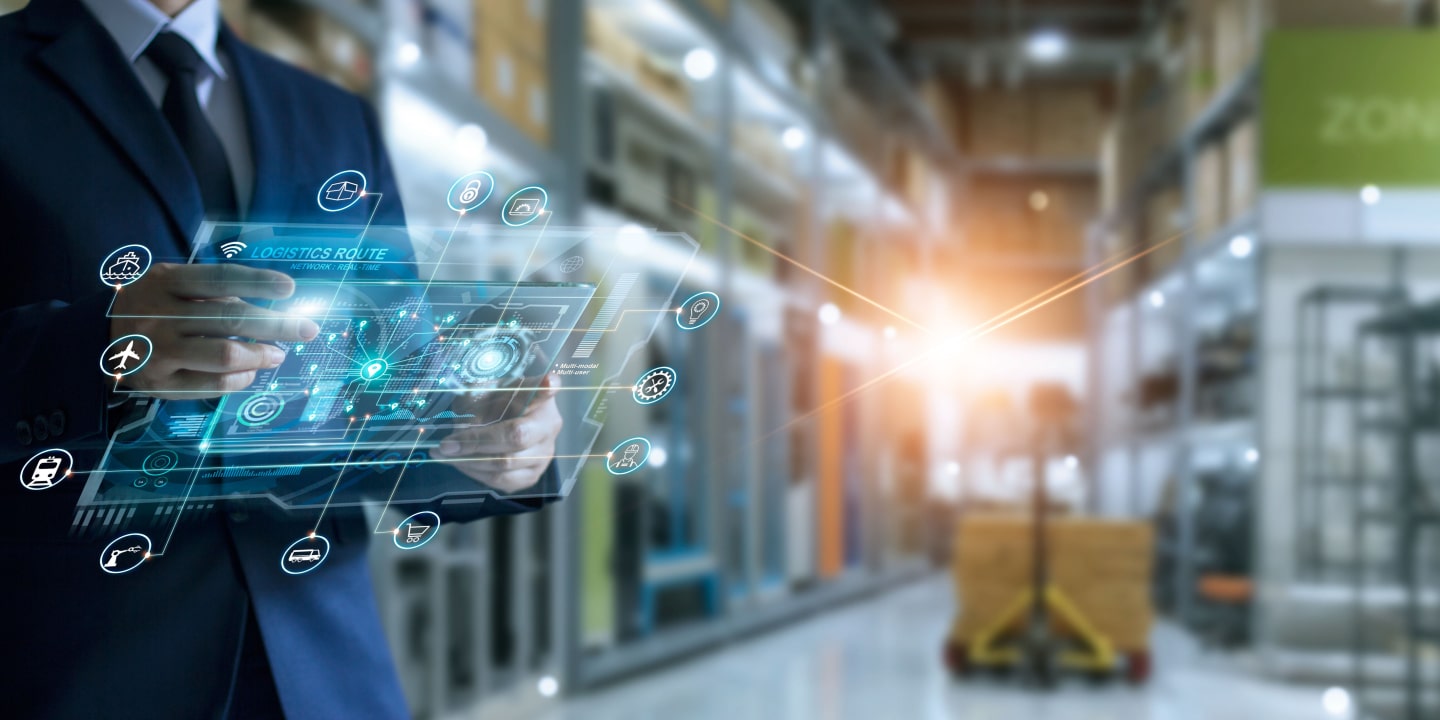Eight Latest Logistics Trends in the Supply Chain Industry

Global supply chain disruptions and tough competition have caused many new and well-established logistics providers to question their position in the market. To survive, they must embrace recent supply chain technology trends to modernize their logistics operations.
According to Deloitte, using advanced technologies gives new entrants, retail giants, and cloud service providers the potential to outperform current logistics leaders. Of over three hundred transportation and manufacturing executives surveyed in 2022, nearly 60% believed these new players are best positioned in the current environment to make significant progress by 2030.
With 15 years of experience in the software market, Django Stars knows how important it is to keep up, especially in the highly competitive logistics industry. For instance, thanks to our innovative approach, Jordanian food delivery service Azyan easily scaled up and now delivers more than one million orders annually.

Staying ahead of the curve is critical, so we researched 2023’s logistics trends in the supply chain industry and their impact on transportation companies. Hopefully, these findings will help logistics companies solve their existing problems, such as sustainability, and excel in innovation, for instance, with robotic process automation. As a logistic software development company, we’re here to equip you for success.
Eight Logistics Software Trends Revolutionizing the Supply Chain Industry
“The logistics and transportation industry is witnessing an unprecedented shift, set to redefine its operational landscape in 2023 and 2024.
Transport Management Software, traditionally conceived as carrier software, is experiencing an innovative shift. The current trend showcases TMS software catering not only to carriers but also to shippers – including manufacturing, retail, and wholesale companies. These businesses can now manage their unique logistics operations with various carriers through one intelligent system. Furthermore, each of these software configurations can be customized according to the specific needs of each company”, —
Tanel Vaarmann, CCO / Co-founder Cargoson.
Volatile market conditions push supply chain businesses to be more agile to survive. Investing in technology plays a crucial role in their survival, with 61% of supply chain companies considering it a key source of competitive advantage. Here are eight tech trends in transportation and logistics shaping the industry’s future.
Artificial intelligence (AI)
Adopting AI gives businesses much more than just improved predictive analytics. It can provide end-to-end transparency and facilitate decision-making throughout supply chain operations. Among the benefits of using machine learning (ML) and other AI in the travel industry are the following:
- More accurate models to forecast demand
- Optimized procurement costs
- Augmented and automated logistics and distribution
- Integrated business planning
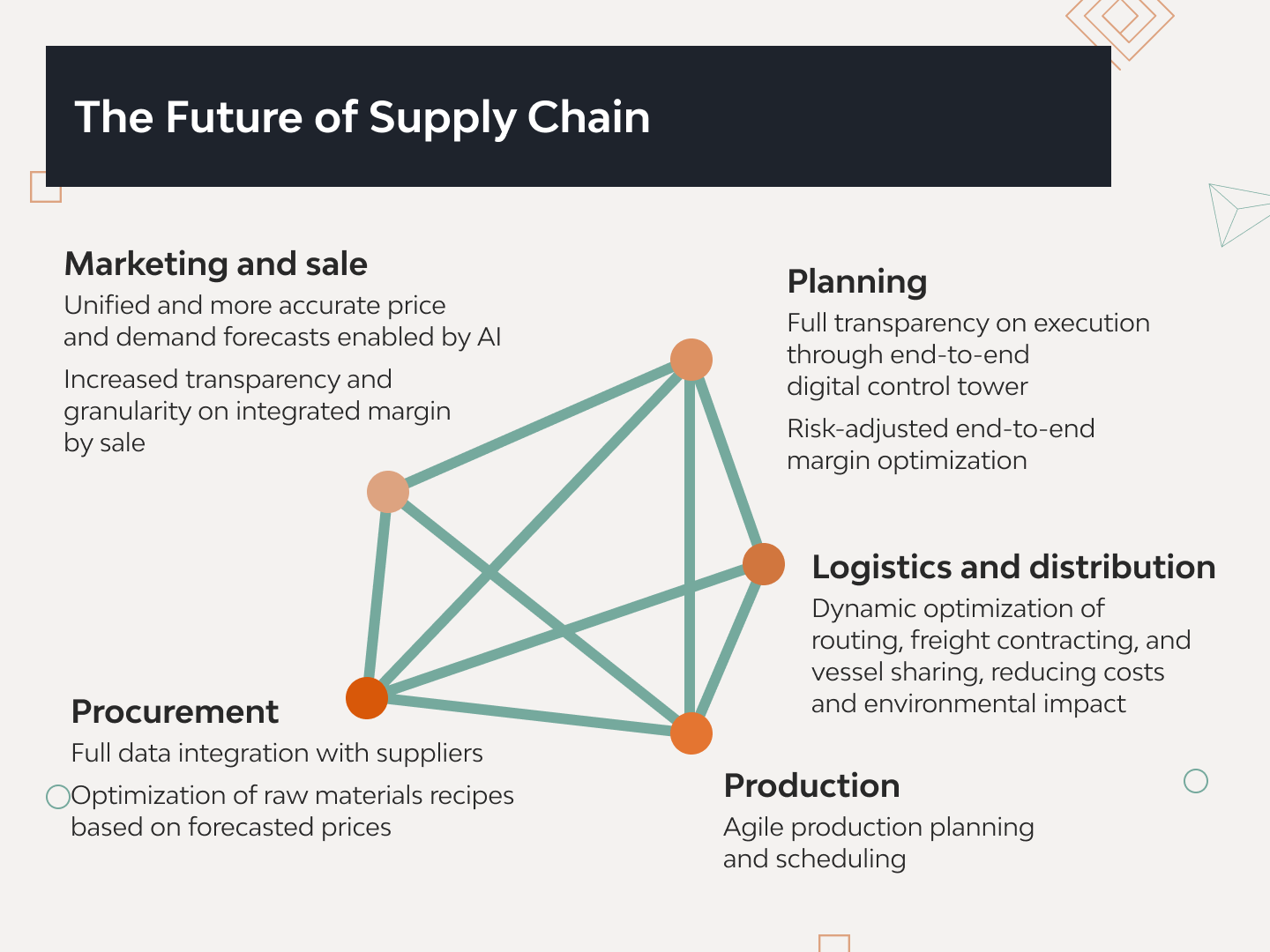
To reap these benefits, logistics companies need to adapt AI models to their specific business needs. McKinsey states that when adopted correctly, AI-powered supply-chain management can reduce logistics costs by 15%, inventory levels by 35%, and increase service levels by 65%.
Read Also: SRM in Supply Chain Management
AI-powered warehouse robotics is another trend that may be beneficial in the near future. According to Gartner, 75% of large enterprises will supplement their warehouse operations with smart robots by 2026. As of now, robots achieve 90% success, requiring operator intervention about every 72 seconds. Thus, it’s too early to speak of their effective usage without constant supervision.
Sustainability
Sustainable logistics is among supply chain management trends revving into high gear. Today’s consumers strive to reduce their carbon footprint and seek companies that offer greener transportation options.
Many logistics giants invest in electric vehicle (EV) fleets to minimize their environmental impact; EVs are also expected to lower operating costs and reduce downtime compared to gas vehicles. For instance, DHL uses EVs and sustainable aviation biofuels under its GoGreen initiative. Logistics provider DB Schenker plans to use a zero-emission short-sea container feeder in Norway to reduce the company’s total carbon footprint. And Danish company Maersk plans to use carbon-neutral methanol in its eight newest ocean vessels to minimize emissions.
Another way to reduce carbon emissions without disrupting the supply chain is through route optimization technology, which we discuss next.
Real-time route optimization
According to the latest report from Future Today Institute, adopting route optimization can increase supply chain sustainability. In addition, route optimization software facilitates load-sharing and efficient distribution of deliveries, both of which minimize deadhead mileage and reduce emissions.
Logistics giant FedEx has already implemented that strategy by consolidating its express, ground, and freight shipping operations. Known as the DRIVE transformation, which includes a program called Network 2.0, the company expects to cut 10% of all routes to save up to $2 billion in 2027.
Such substantial cost and resource savings will boost the growth of the route optimization software market, bringing a CAGR of 10.9% between 2023 and 2028.
Real-time supply chain visibility
Nidhi Gupta, CEO at Portcast, points out that with rising B2B customer expectations for product deliveries, supply chains are becoming a key competitive advantage (or lack thereof) for companies. Digitalizing logistics has become a priority in recent years, shifting the focus to selecting the right solution rather than deciding whether to adopt it. However, the real challenge lies in ensuring reliable data from visibility solutions, as maritime supply chain data is complex and prone to errors from diverse sources and formats.
“To provide a competitive solution with actionable insights, cutting-edge technologies like artificial intelligence and machine learning are integral to a visibility solution. These insights drive key decisions with a significant impact on supply chain ROI”, —
Nidhi Gupta, CEO at Portcast.
In doing so, the focus extends beyond tracking shipment status and location; it encompasses end-to-end risk management by anticipating and taking proactive action, Nidhi Gupta says. For example, visibility solutions enable companies to identify bottlenecks at specific terminals or ports, predict containers at risk of being delayed, and determine which containers may incur demurrage fees.
“Access to this information allows for proactive measures, cost savings, streamlined downstream activities, and the ability to maintain delivery schedules and keep customers satisfied”, —
Nidhi Gupta, CEO at Portcast.
Visibility has become more of a requirement in the supply chain than ever before; around 40% of consumers want to know the precise real-time location of their packages. IoT technologies like RFID-powered smart labels, eSIM, and GPS sensors can improve supply chain visibility, helping logistics companies to:
- Track a shipment’s exact location
- Monitor container temperature, humidity, and other parameters
- Track the products’ location and inventory levels
- Optimize resources and space utilization
No wonder the global smart label market is expected to generate over $21 billion in revenue by 2028. European logistics provider DB Schenker, a pioneer in IoT adoption, uses a new ultra-thin high-tech disposable label that lets consumers track freight shipments across land, air, and ocean. RFID-based price tags have also helped clothing brand Zara achieve visibility regarding the availability of its products across the entire supply chain.
According to a McKinsey survey, companies with end-to-end supply chain visibility had a significantly higher likelihood of successfully navigating the supply chain challenges that arose during the disruptions in early 2022.
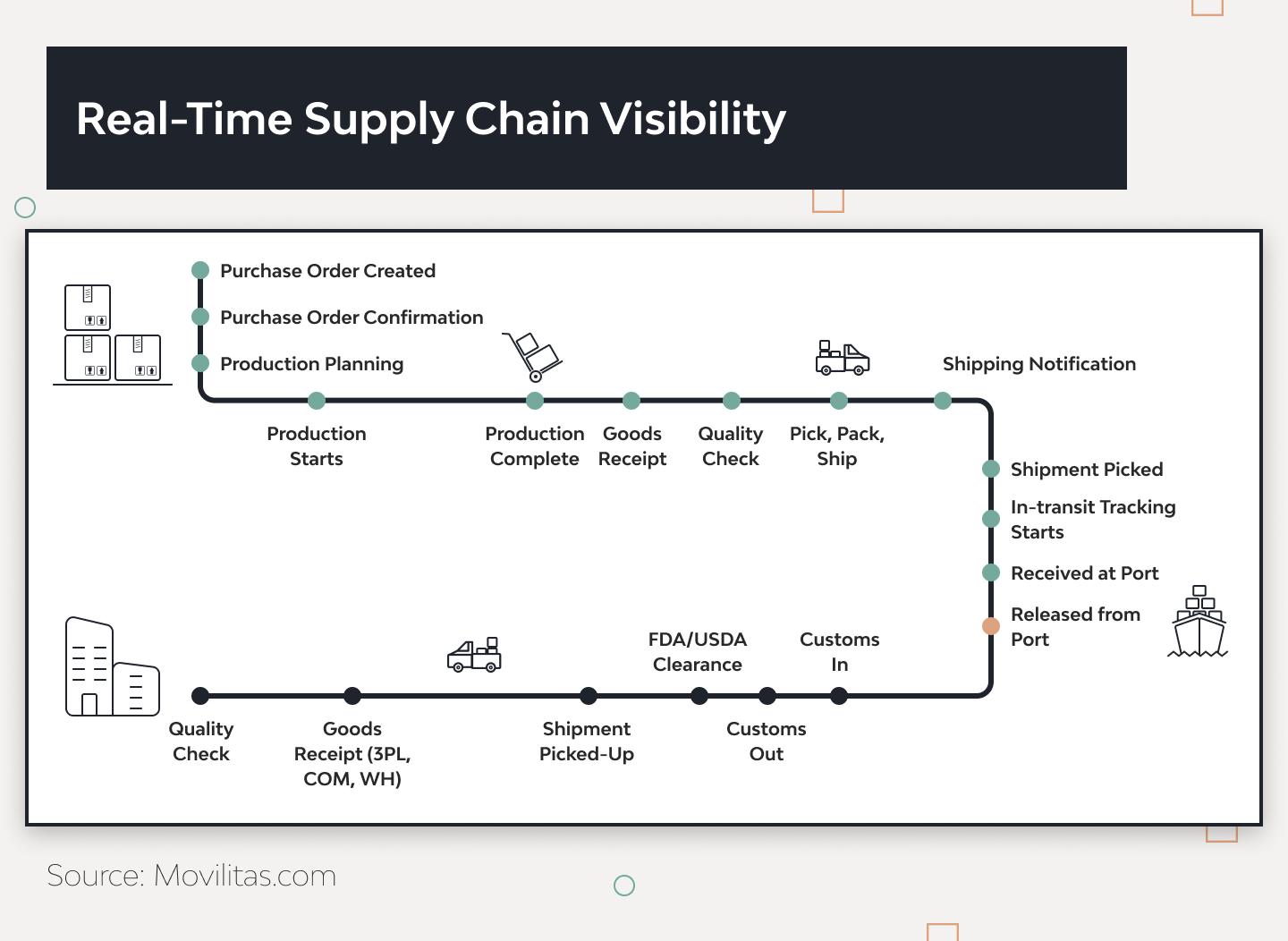
The integration of generative AI for supply chain further amplifies this visibility, enabling businesses to proactively generate insights, anticipate potential disruptions, and optimize decision-making processes for enhanced resilience and adaptability in dynamic environments.
Immersive technologies
AR (augmented reality) and VR (virtual reality) are hot logistics technology trends worth mentioning. According to McKinsey’s 2022 tech trends outlook, 189 million deskless workers in transportation and logistics present a massive potential for scaling immersive technologies.
Combining AR with digital twins (e.g., virtual models of warehouses) facilitates safer product storage and can predict which products will best meet customer needs. For example, AR can superimpose real-time visual overlays on the physical environment so workers can see inventory levels, picking instructions, and optimal routes.
Some logistics companies, like DB Schenker and DHL Express, have already started using VR to train and engage employees. Still, many barriers hinder the wide adoption of AR and VR, including the cost of onboarding and training employees who don’t know how to use AR/VR devices and buying specific hardware.
Advanced analytics
The growth of new data streams makes AI-powered advanced analytics a must to:
- Extract valuable insights and patterns
- Build a more intelligent network
- Quickly react to changing market demands
Advanced analytics tools can combine internal and external data to model capabilities and simplify decision-making.
According to a 2020 Deloitte survey, only 40% of supply chain companies were actively using AI to drive insights, meaning the adoption of advanced analytics is still maturing. The major obstacles lie in legacy IT architecture, cybersecurity concerns, and lack of experienced tech talent.
Read Also: How to Prevent Supply Chain Fraud
Robotic process automation (RPA)
Ease of adoption, flexibility, and a quick ROI make RPA a safe bet among current trends in supply chain management. RPA can successfully take over the lion’s share of customer service, process invoices, and facilitate warehouse and freight management. According to the latest McKinsey survey, logistics companies will spend more than 30% of their capital on automation in the next five years, outspending other industries surveyed.
Cognitive automation will also be popular for dealing with exception management and decision-making processes. Guided by humans, AI and ML algorithms that continually improve their own performance through self-learning will detect anomalies and perform trade-off analysis.
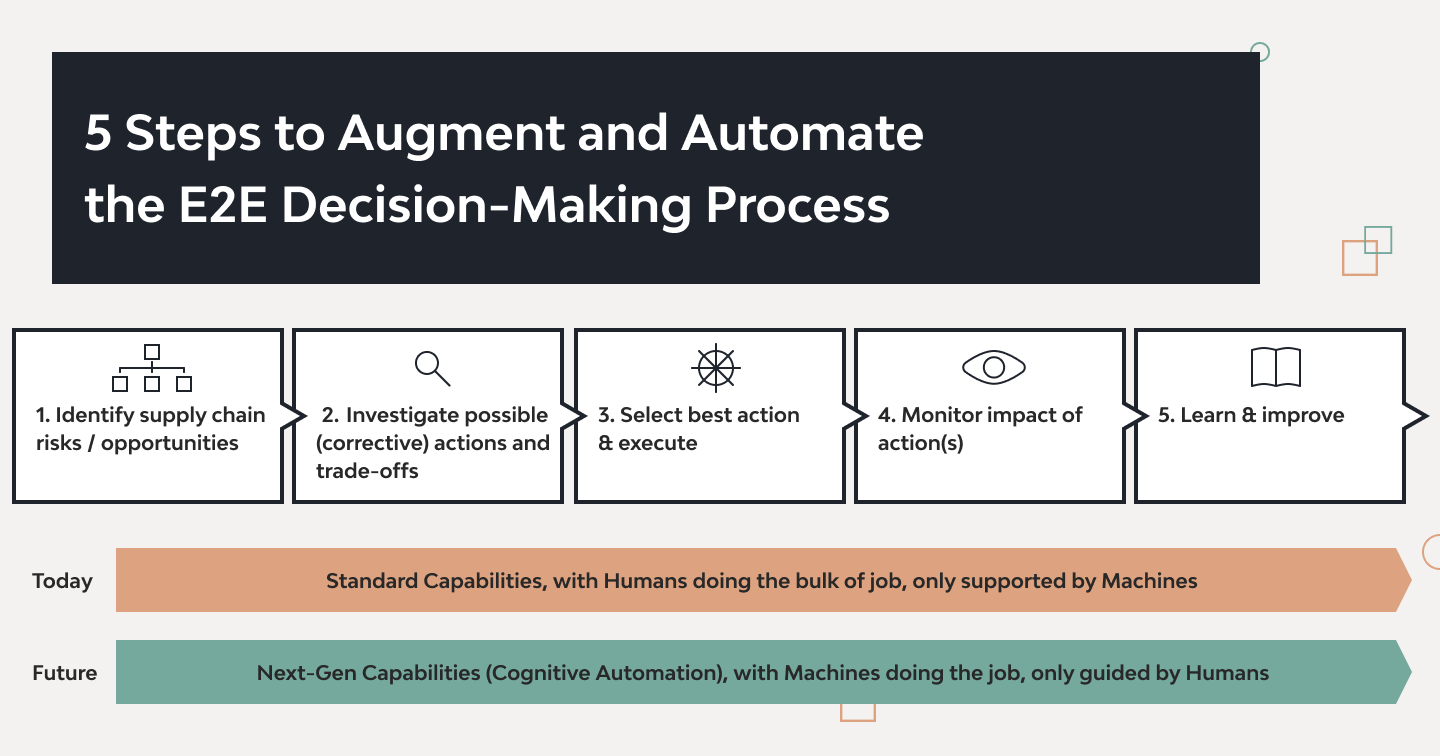
According to Deloitte, adopting cognitive automation can help companies reduce their costs by 22% and increase revenue by 11% over three years. The study also states that the organizations that have adopted cognitive automation on a large scale earlier have already achieved a 27% in cost savings.
Autonomous vehicles (AV)
Driverless technology has the power to make freight transportation by road faster and safer. The self-driving truck market exceeded $900 million in 2021 and is expected to grow at 17% annually till 2028. Companies like FedEx, UPS, DHL, and Schneider National are betting on autonomous transportation.
Currently, adopting autonomous trucks is costly and still requires a human driver on board for safety. But WeForum anticipates that by 2030 the industry will see widespread deployment of autonomous trucks without drivers, which is expected to reduce the total cost of ownership by 45%. In 2021 Deloitte reported that 80% of surveyed companies were currently investing or planning to invest in technologies like autonomous trucks or delivery drones.
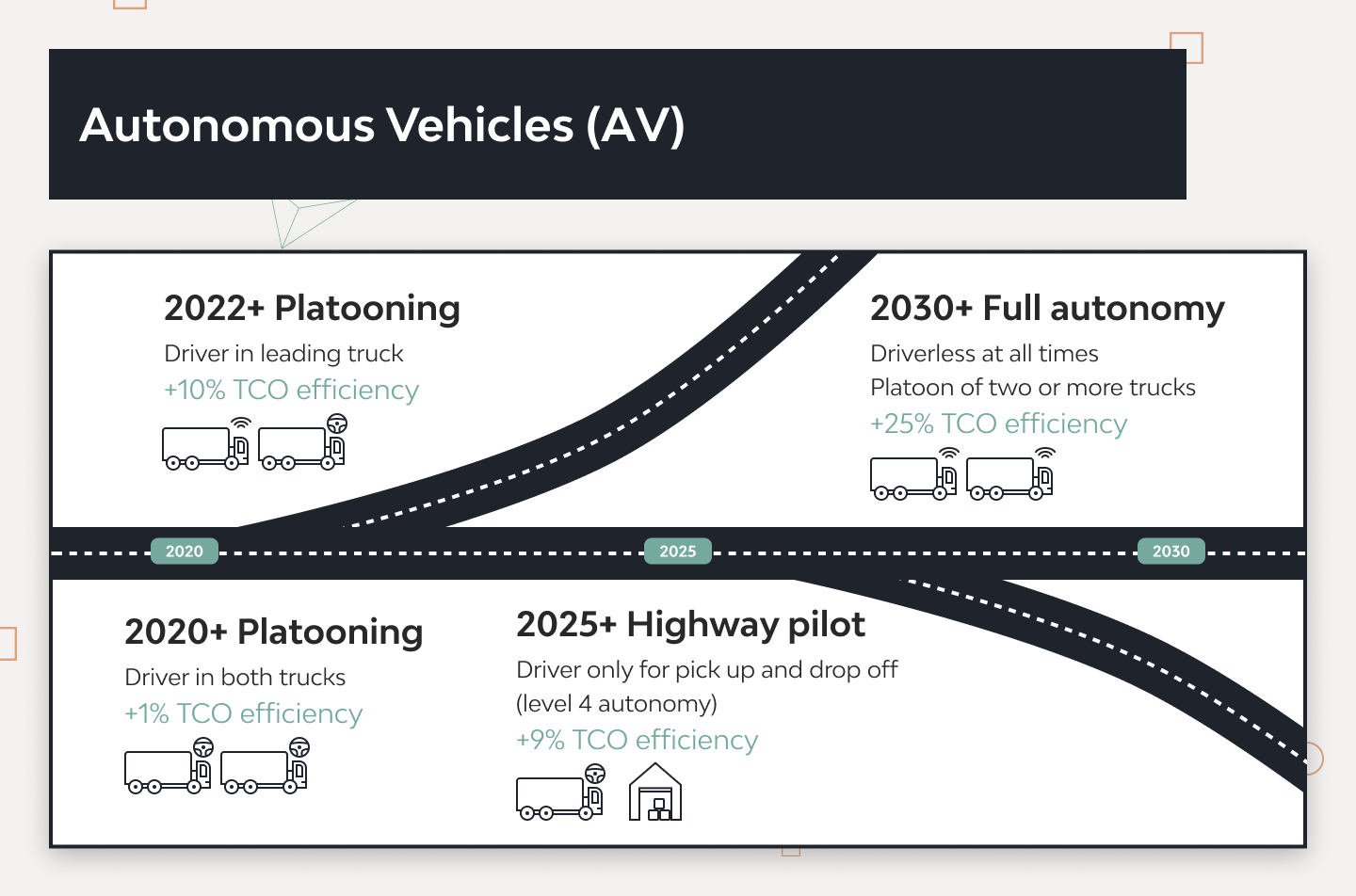
Mark Thomas, SVP of Strategic Alliances at Ridecell noticed:
“Ridecell is pioneering a new term/category for the fleet industry. “Fleet Automation” is not fleet management. Rather, it takes all the data and insights from fleet management systems and using AI along with settings dictated by the company, these insights are turned into automated tasks that make fleet-based businesses more efficient and increase vehicle utilization.
For example, if a fleet vehicle has a check engine light on, then the system automatically schedules a maintenance call and reassigns a new vehicle to the driver, all before the driver even gets to work. Historically, this is all done manually, or the driver gets in the car anyway and makes the situation worse, lessening the life of the vehicle.”
Conclusion
Recent advances in data science and engineering are driving a seismic shift in the future of freight transportation. Accelerated by customer demand for sustainability and visibility, these advances are revolutionizing the logistics industry and presenting opportunities for new competitors to enter the market.
For example, the DRG Solutions team will keep an eye on the following trends in logistics in the near future: AI, supply chain agility, automation, green logistics, supply chain visibility, and addressing labor shortages. Embracing technology and sustainable practices will be key for companies to succeed in an increasingly competitive logistics landscape.
To succeed, transportation and logistics companies must deftly navigate new supply chain technology trends. When adopted properly, the technology trends can improve operations and secure a company’s position in the market and quickly deliver an impressive ROI.
Our tech experts constantly research the market so that we can offer clients modern and optimal solutions for their logistics software development needs. Our successful logistics use cases demonstrate how using best practices with the latest technologies helps businesses reach a wider audience and improve their bottom line.
Django Stars’ experts have your back. Contact us, and we’ll happily prepare your logistics business to navigate turbulent markets.
- What top tech trends in transportation and logistics are reshaping the industry?
- Automation and robotics, IoT, AI, immersive technologies, and sustainability are among the latest logistics trends in supply chain management.
- How is AI technology transforming logistics operations?
- Artificial intelligence can enhance logistics visibility, optimize route planning, and provide predictive analytics to facilitate decision-making. This leads to substantial cost savings and improves operational transparency.
- What’s the role of IoT in modern logistics and supply chain management?
- IoT devices and sensors can collect data from various links in the supply chain, including warehouses, vehicles, and products. These data can monitor environmental conditions, track assets, optimize inventory management, and enhance supply chain visibility.
- Which of the current IT logistics trends in supply chain management requires the most minimal investment?
- Leveraging automation typically requires a smaller investment compared to other tech trends. Still, it has a good ROI and can perform recurring, time-consuming activities like sending invoices, filling out forms, and handling simple customer requests.






